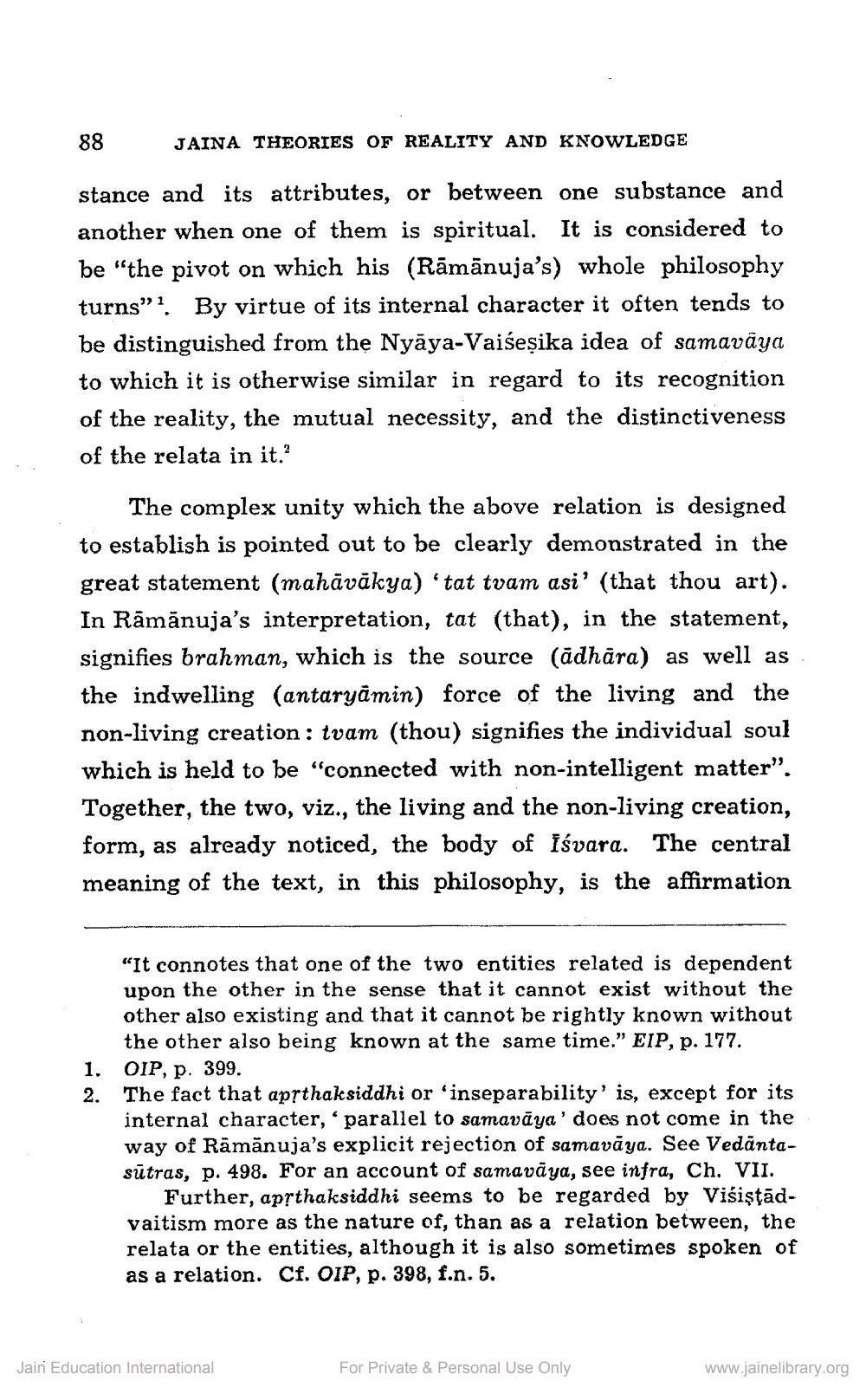________________
88
JAINA THEORIES OF REALITY AND KNOWLEDGE
stance and its attributes, or between one substance and another when one of them is spiritual. It is considered to be "the pivot on which his (Rāmānuja's) whole philosophy turns". By virtue of its internal character it often tends to be distinguished from the Nyaya-Vaiseṣika idea of samavāya to which it is otherwise similar in regard to its recognition of the reality, the mutual necessity, and the distinctiveness of the relata in it."
The complex unity which the above relation is designed to establish is pointed out to be clearly demonstrated in the great statement (mahāvākya) 'tat tvam asi' (that thou art). In Rāmānuja's interpretation, tat (that), in the statement, signifies brahman, which is the source (adhāra) as well as the indwelling (antaryamin) force of the living and the non-living creation: tvam (thou) signifies the individual soul which is held to be "connected with non-intelligent matter". Together, the two, viz., the living and the non-living creation, form, as already noticed, the body of Isvara. The central meaning of the text, in this philosophy, is the affirmation
1.
2.
"It connotes that one of the two entities related is dependent upon the other in the sense that it cannot exist without the other also existing and that it cannot be rightly known without the other also being known at the same time." EIP, p. 177. OIP, p. 399.
The fact that apṛthaksiddhi or 'inseparability' is, except for its internal character, parallel to samavāya' does not come in the way of Ramanuja's explicit rejection of samavāya. See Vedantasūtras, p. 498. For an account of samavāya, see infra, Ch. VII.
Further, apṛthaksiddhi seems to be regarded by Visiṣṭādvaitism more as the nature of, than as a relation between, the relata or the entities, although it is also sometimes spoken of as a relation. Cf. OIP, p. 398, f.n. 5.
Jain Education International
For Private & Personal Use Only
www.jainelibrary.org




